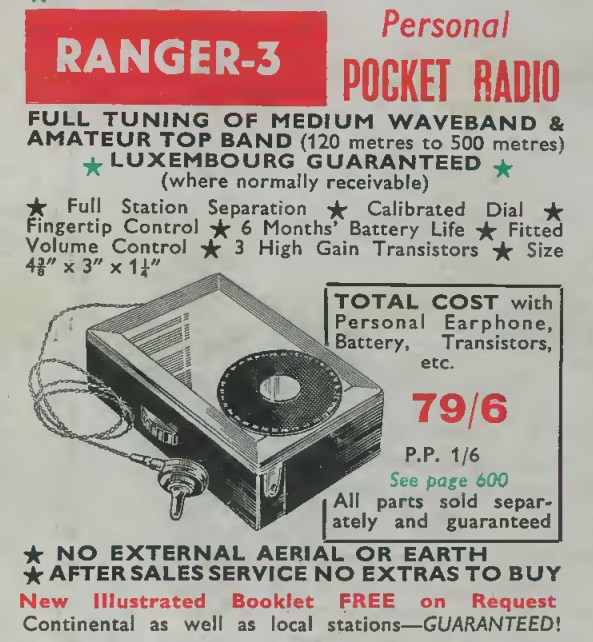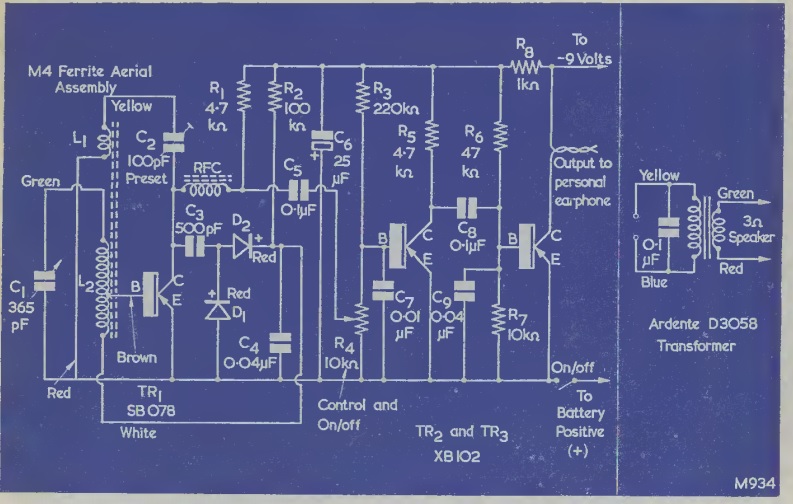 Shown here from the March 1961 issue of the British magazine Radio Constructor is a set dubbed the “Ranger 3,” a pocket sized three-transistor receiver for the medium waves, including the 160 meter ham band and marine frequencies. The set employed a regenerative detector and had a built-in ferrite antenna. The basic set used an earphone, but as shown in the schematic, it could drive a speaker with a few additional parts.
Shown here from the March 1961 issue of the British magazine Radio Constructor is a set dubbed the “Ranger 3,” a pocket sized three-transistor receiver for the medium waves, including the 160 meter ham band and marine frequencies. The set employed a regenerative detector and had a built-in ferrite antenna. The basic set used an earphone, but as shown in the schematic, it could drive a speaker with a few additional parts.
As was often the case with this magazine, there was a construction article, and the ad for a parts supplier conveniently appeared in the same issue with all of the parts. In this case, Henry’s Radio Ltd. of London could supply all the required parts for just over 79 shillings.
The ad points out that the set should be able to pull in Radio Luxembourg in most areas, and the ad turns this into “Luxembourg Guaranteed (where normally receivable).” The BBC had a monopoly on broadcasting in Britain, and the English commercial program from Luxembourg was a popular alternative.
This simple set did a good job of pulling in the distant station because it was optimized for the station’s wavelength of 208 meters (1439 kHz). Since this was close to the top of the dial on most sets, the reception might be marginal, since they were probably optimized for the middle of the broadcast band. The Ranger 3, however, covered 600 kHz to 2.5 MHz, meaning that the Luxembourg station was right in the middle of the dial. In fact, the article suggested waiting until late at night to tweak the receiver, using Radio Luxembourg as the test signal.
According to the article, the set was a very good performer, pulling in numerous continental stations, especially at night.


Seems like an odd construct on the price. I’m surprised that they didn’t state it as 3/19/6. That would be around $150 – $170 in today’s dollars.